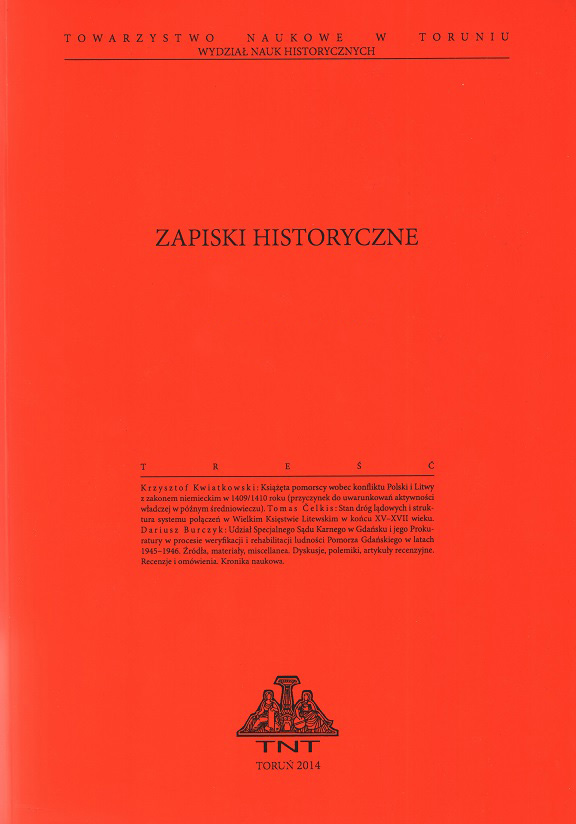Nowe ustalenia w zakresie funkcji i wystroju empory kościoła pofranciszkańskiego w Toruniu
New Findings Concerning the Function and the Furnishing of the Matroneum in the Post-Franciscan Church in Torun
Author(s): Monika Jakubek-Raczkowska, Juliusz RaczkowskiSubject(s): Cultural history, Middle Ages, History of Art
Published by: Towarzystwo Naukowe w Toruniu
Keywords: Middle Ages; Franciscans; Torun; Church of the Assumption of the Holy Virgin Mary in Torun; matroneum; wall paintings
Summary/Abstract: The article addresses the original function of the matroneum in the former Franciscan Church of the Assumption of the Holy Virgin Mary in Torun. These remarks are the result of the latest discoveries and technological research. The matroneum, situated above the cloister in the northern nave of the church, was built during the reconstruction of the church to its present form. Based on a dendrochronological examination, the matroneum was secured with a wooden railing in the 1350s and later. Due to a lack of written sources, the functions of the matroneum are not determined in scholarly publications. It may have been used as an oratory for friars. The authors analyse the architectural shape of the matroneum, take into account its original communication with the church and monastery and the remains of its furnishing. The study of the architectonic structure and the staircase that now leads from the nave to the matroneum allows to determine that it was constructed only in the eighteenth century. In the Middle Ages, the matroneum was connected to the monastery through a passage that is now bricked up, and to the ground floor of the church it was connected through an older, thirteenth-century staircase tower. A convenient, direct communication between the matroneum and the dormitory, the fact that the monastery was not directly connected to the presbytery, and the fact that the church choir was rebuilt at the end of the fourteenth century reinforce the theory that the matroneum was used for liturgical purposes. The authors also discuss the previously unknown polychrome relics inside the matroneum. These are, respectively, a relic of a fourteenth-century heraldic representation with the head of an ox and a remnant of a figural scene on the northern wall from the last quarter of the fourteenth century. Both paintings have been subjected to in-depth research, including non-destructive methods (XRF, UV and IR). The first of the paintings, probably the coat of arms of a burgher family, may be a proof that the laymen had access to the interior of the matroneum. The second painting reinforces the assumption of the authors regarding the liturgical use of this place.
Journal: Zapiski Historyczne
- Issue Year: 85/2020
- Issue No: 1
- Page Range: 163-185
- Page Count: 23
- Language: Polish

